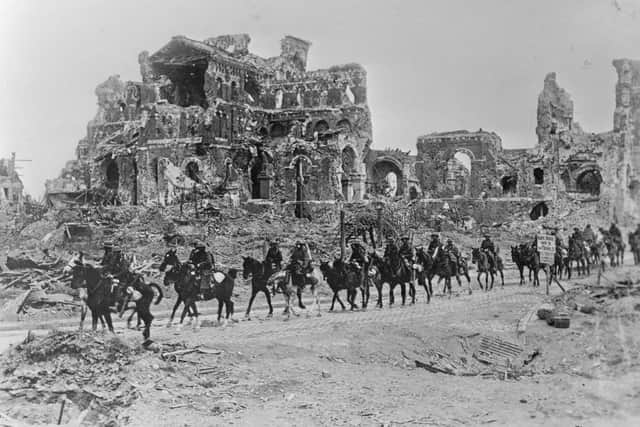Book review: All The World At War, by James Charles Roy
James Charles Roy is an American historian unattached to a university. He has lived in Ireland and written several books about Irish history, admired by Irish writers, among them Colm Toibin. All The World At War, fruit of long reflection, research and much travelling, is an unusual history of the First World War. It is not a narrative account. There are innumerable such books. Its subtitle is “People and Places 1914-1918”, but of course it goes back from the first date and beyond the second.
The First World War was a war of peoples, inasmuch as armies were of unprecedented size, but in the West – at least unlike the 1939-45 war – civilians away from the battlefields were rarely in danger, rarely under attack, though they suffered economic hardship from, for instance, the Royal Navy’s blockade of Germany.
Advertisement
Hide AdResponsibility for the war has been long argued. The wretched truth is that Germany, France and Russia all had reasons for wanting war, as did Austria-Hungary, and once mobilisation was underway there was an unstoppable drift to war, even if AJP Taylor’s claim that it was all due to the imperatives of railway timetables was an exaggeration. Roy saddles the Kaiser with responsibility, but despite his neurotic bombast, it was the General Staff, not the chatterbox Kaiser, that made the decision. Britain might have remained neutral as in the Franco-Prussian War of 1870 if the German war plan hadn’t this time involved a sweep through neutral Belgium.


What horrifies us now in our knowledge of what was to come is the general enthusiasm for war, with cheering crowds in Paris and Berlin and the young poet Rupert Brooke thanking God for “matching us with this hour.” There was no conscription in Britain until 1916, but men and boys flocked to recruiting offices.
We are all still horrified by the slaughter on the Western Front and therefore mostly (perhaps) critical of the British and French strategy in a war in which advantage lay with defence. But Germany, occupying much of northern France and Belgium and still holding Alsace and Lorraine, lost to France in 1870-1, had to be defeated and dislodged. If, at an Armistice, they still held their ground, they would in effect be the winners. In the general context, Gallipoli (on which Roy writes a fine chapter) was a distraction, even a sideshow. That said, there is a fine chapter on the Turkish commander, later president, Kemal Ataturk. Roy is also fascinated by the War in the Desert and the character and life of TE Lawrence.
The story of the First World War is of course a story of folly as well as horror. Europe’s three empires, all of which bore responsibility for the war, were defeated, Tsarist Russia and the Hapsburg Empire were destroyed, with sad consequences for both Russia and Central Europe. The punitive peace inflicted on Germany at Versailles, treated in detail by Roy, made Hitler and his foul regime possible. But the victorious Allies, France and Britain, were scarcely better off. The nature of their victory, and the peace that followed, prepared the way for defeat in 1940, neither being then in a position to fight a great land war.
This is a rich and thought-provoking book. It doesn’t offer a straight narrative history of the war. Anyone ignorant of that might be better to read other works first, even AJP Taylor’s short history. But there is a great sweep to Roy’s book, and his character sketches are acute and often – to my mind – fair. As usual, few lessons were learned, and those that were learned were wrong. In 1914-18 advantage lay with defence, but the war of 1939-45 was a war of movement. Unusually for an American, Roy doesn’t exaggerate the USA’s contribution to the Allied victory and understands why French and British leaders found President Wilson’s hopeful idealism to be irritating.
At the time, the First World War was spoken of hopefully as a war to end war, but it led ineluctably to the equally terrible Hitler War 20 years later – a more modern war, one in which civilians suffered at least as terribly as the armies, navies and air forces. Bleakly, in his last sentence Roy says “It’s the human condition.” Looking at Israel, Hamas and Gaza today, who can deny this?
All The World At War, by James Charles Roy, Pen & Sword, 724pp, £35